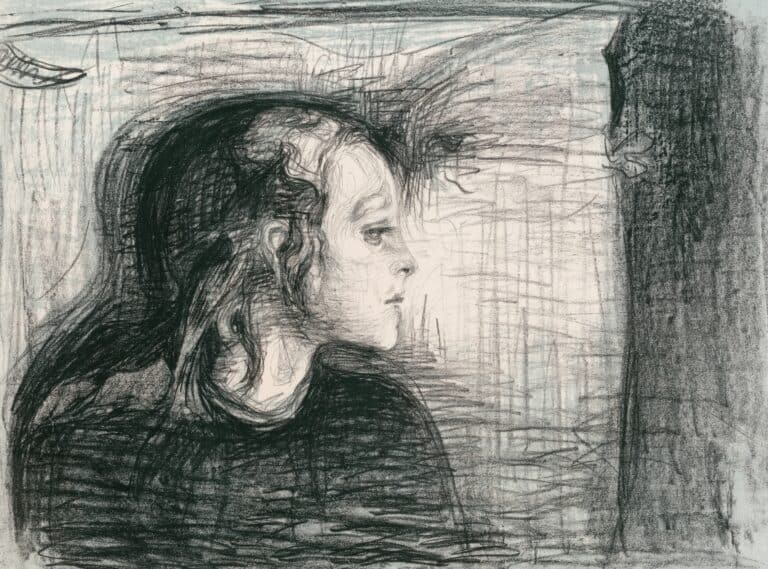Staring OCD: What it is and How to Stop

In the complex landscape of obsessive-compulsive disorder (OCD), a unique subset known as Staring Obsessive-Compulsive Disorder, or Staring OCD, stands out as a distinct challenge. Characterized by an overwhelming fear of staring at others or making inappropriate eye contact, this subtype of OCD (mental disorder) can profoundly impact an individual’s daily life, relationships, and self-esteem.
Those afflicted by compulsive Staring OCD often find themselves caught in a cycle of intrusive thoughts and compulsive behaviors, desperately seeking relief from the distress these thoughts provoke.
In this guide, we will delve into the intricacies of Staring OCD, exploring its origins, manifestations, and the intricate web of anxiety and OCD staring compulsions that define it.
If you’ve ever wondered what OCD would say if it could talk, you’re not alone. My ebook, Listen Up: OCD is Talking, takes you inside the mind of OCD to reveal its tactics and how to overcome them.
Why You Can’t Stop Staring

let’s delve into more details about why OCD Staring occurs and why it’s challenging to stop:
Intrusive Thoughts
Compulsive staring is fueled by intrusive thoughts—unwanted and distressing mental images or ideas. These thoughts often center around the fear of staring at others, making inappropriate eye contact, or causing harm through such actions.
Anxiety and Fear
Intrusive thoughts trigger intense social anxiety and fear. You may worry about how your behavior could be perceived, the potential negative consequences, or harming others unintentionally. This anxiety can become overwhelming and lead you to feel a sense of urgency to perform mental acts to reduce it.
Compulsive Behaviors
Compulsions are repetitive behaviors or mental rituals performed to alleviate anxiety. In the case of compulsive staring, you might engage in behaviors like involuntary eye movement, blinking excessively, avoiding eye contact, or quickly looking away. These behaviors provide temporary relief from social anxiety, reinforcing the idea that they are necessary to prevent something bad from happening.
Short-Term Relief
The compulsive behavior provide short-term relief, convincing your brain that they are effective strategies to manage anxiety. This reinforces the connection between the anxiety and the compulsive response, making the cycle harder to break.
Negative Reinforcement
When you perform compulsive behaviors (OCD Staring), your brain associates them with a decrease in anxiety. This negative reinforcement strengthens the cycle, as your brain learns to rely on these behaviors to cope with anxiety and stressful life events.
Belief in the Threat
Over time, your brain begins to view the compulsions as necessary actions to prevent the perceived threat. This deepens the connection between social anxiety, intrusive thoughts, and compulsive behaviors.
Breaking this cycle requires interrupting the link between anxiety and staring intensely. Exposure and response prevention (ERP) therapy is a gold-standard treatment for OCD, including compulsive staring. ERP involves gradually exposing yourself to the situations that trigger your anxiety while resisting the urge to perform compulsive behaviors (OCD Staring).
This teaches your brain that the feared outcomes are unlikely, reducing the anxiety response over time.
ERP helps you gain control over your responses, weaken the association between anxiety and compulsions, and ultimately decrease the impact of compulsive staring on your life.
It’s important to work with a qualified mental health professional to guide you through this process.
Related Articles – Is OCD a Type of Autism?
What is Staring OCD?
Staring OCD is a specific manifestation of obsessive-compulsive disorder that revolves around the fear of inadvertently staring at others or maintaining eye contact for an inappropriate amount of time.
People with this condition often experience intense anxiety and distress about the potential negative consequences of their perceived “staring behavior.”
Individuals with OCD Staring may engage in various compulsive behaviors to alleviate and tolerate anxiety. These could include repeatedly blinking, looking away, or purposefully avoiding eye contact altogether.
In severe cases, they might even go to great lengths to avoid social situations altogether to prevent the possibility of triggering their obsessive fears.
It’s important to note that OCD Staring, like other subtypes of OCD, arises from irrational and distressing thoughts. These intrusive thoughts lead individuals to perform rituals or mental compulsions in an attempt to mitigate their anxiety.
However, these behaviors often reinforce the cycle of obsessions and compulsions, making the condition challenging to manage without proper treatment.
Cognitive-behavioral therapy (CBT), exposure and response prevention (ERP), and sometimes medication can be effective treatments for OCD Staring. A mental health professional can provide a proper diagnosis and develop a personalized treatment plan to help individuals regain control over their thoughts and behaviors.
How to Treat Compulsive Staring

Treating compulsive staring typically involves a combination of therapeutic approaches.
Therapy
Cognitive-behavioral therapy (CBT) with a focus on exposure and response prevention (ERP) is often considered the primary treatment for compulsive staring.
ERP involves gradually exposing the individual to situations that trigger their anxiety (such as maintaining eye contact) while preventing them from engaging in their compulsive behaviors (looking away or blinking excessively). Over time, this helps reduce the anxiety associated with the obsession.
Mindfulness and Relaxation Techniques
Learning mindfulness and relaxation techniques can help individuals manage their anxiety. Techniques like deep breathing exercises, group therapy, meditation, and progressive muscle relaxation can provide strategies to cope with anxious feelings.
Medication
In some cases, medication can be used to help manage the symptoms of compulsive staring. Selective serotonin reuptake inhibitors (SSRIs) are commonly prescribed, as they can help regulate serotonin levels in the brain and reduce the intensity of obsessive thoughts and compulsive behaviors.
Support Groups
Participating in support groups or group therapy sessions can provide individuals with a sense of community and understanding. Connecting with others who share similar experiences can be comforting and empowering.
Lifestyle Changes
Adopting a healthy lifestyle that includes regular exercise, a balanced diet, and adequate sleep can contribute to overall well-being and stress reduction, which may in turn help manage OCD symptoms.
Family Involvement
Involving family members in the treatment process can provide additional support. Educating loved ones about OCD and its treatment can improve communication and foster a more supportive environment.
Consistency and Patience
Overcoming compulsive staring takes time and consistent effort. It’s important to be patient with yourself and celebrate small victories along the way.
Remember that seeking guidance from a mental health professional, such as a licensed therapist or psychiatrist, is crucial for developing a personalized treatment plan tailored to your specific needs and circumstances. They can provide expert guidance and monitor your progress as you work toward managing Ocular Tourettic OCD and its associated social interactions.
Related Articles – How To Treat Arithmomania
What to Do if Staring OCD Ruined Your Life

If you feel that OCD Staring has significantly impacted your life, there are steps you can take to regain control and work towards improving your well-being:
Seek Professional Help
Reach out to a mental health professional who specializes in treating OCD or anxiety disorders. They can provide a proper diagnosis, create a personalized treatment plan, and guide you through the recovery process.
Therapy
Consider engaging in cognitive-behavioral therapy (CBT), particularly exposure and response prevention (ERP) therapy. ERP involves gradually confronting your fears and resisting the urge to engage in compulsive behaviors. A therapist can help you navigate these challenges in a structured and supportive environment.
Medication
Discuss medication options with a psychiatrist if appropriate. Selective serotonin reuptake inhibitors (SSRIs) are commonly prescribed to help manage OCD symptoms.
Educate Yourself
Learn more about OCD, its subtypes, and how it affects your life. Understanding the condition can empower you to make informed decisions about your treatment and self-care strategies.
Practice Self-Care
Focus on your overall well-being by incorporating self-care activities into your routine. This can include exercise, healthy eating, getting enough sleep, and engaging in activities you enjoy.
Build Support
Connect with friends, family, or support groups where you can share your experiences and receive understanding and encouragement.
Set Realistic Goals
Break down your recovery into achievable steps. Celebrate each small victory along the way to keep yourself motivated.
Challenge Negative Thoughts
Work on identifying and challenging the negative thought patterns that contribute to your OCD. A therapist can help you reframe these thoughts in a more balanced and realistic way.
Practice Mindfulness
Learning mindfulness techniques can help you stay present and manage anxiety. Mindfulness exercises can be particularly helpful in reducing the intensity of obsessive thoughts.
Be Patient
Recovery from OCD is a gradual process. Be patient with yourself and recognize that setbacks can happen. The key is to stay committed to your treatment plan and seek support when needed.
If you feel that Staring OCD has significantly impacted your life, don’t hesitate to seek professional help. With the right guidance and treatment, many individuals are able to manage their symptoms and improve their quality of life.
Final Thoughts on Staring OCD
Understanding OCD and the Staring Compulsion Obsessive-Compulsive Disorder (OCD) is a mental health condition affecting millions worldwide. The journey to understand and overcome Staring OCD, we have unraveled the intricate web of anxieties, obsessions, and compulsions that define this unique form of OCD.
The overwhelming fear of unintentionally staring at others or making inappropriate eye contact can cast a shadow over every aspect of life, causing distress and isolation. However, armed with knowledge and effective strategies, there is hope for breaking free from the cycle that binds one to these anxieties.
Ultimately, the goal is not only to free yourself from the distress of Staring OCD but also to reclaim a life marked by confidence, connection, and personal fulfillment. With determination, perseverance, and the resources at your disposal, you can pave a path to a future where anxiety no longer dictates your actions.
If you found this article helpful, imagine what an entire guide to OCD could do for you. Check out my ebook, Listen Up: OCD is Talking, and take charge of your journey today.





